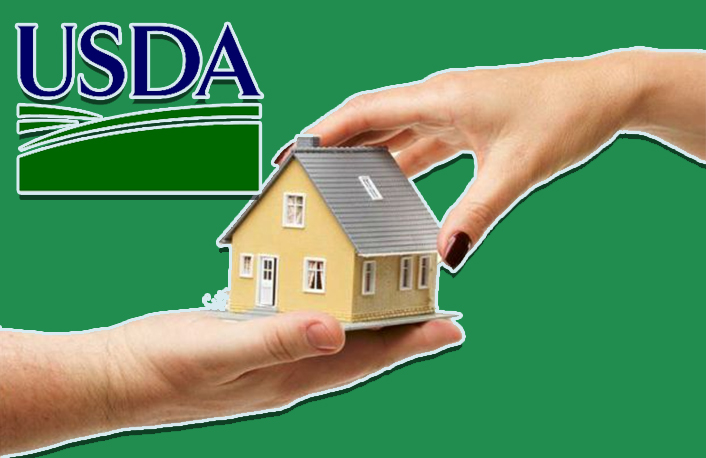If you intend to buy a home, it can be very hard to navigate and comprehend the complex world of mortgages. For people who are looking for a homeownership path with special benefits, a USDA loan might be the right option for you. This loan provides ample terms but also has some restrictions with the goal of supporting homeownership in certain regions of the U.S.

The United States Department of Agriculture (USDA) is a loan program that was established to support people in rural areas to become homeowners. USDA loans offer this in various ways. These are no-down payment mortgages, so you can finance the whole purchase without needing to bring any cash.
USDA loans have an additional benefit with no down payment especially if you have a low income, you may be eligible for a low, fixed interest rate. In this article, we will discuss the advantages and disadvantages and who is eligible for a USDA loan.
Types of USDA Loans
USDA loan programs are designed to meet the needs of various policyholders, each with specific qualifications and applications. The following types of USDA loans include;
Guaranteed loans
The USDA Guaranteed Home Loan Program, also known as Section 502 Guaranteed, allows approved lenders to offer 30-year fixed-rate loans in USDA-eligible areas. Borrowers must have an income of 115% of the area’s median household income.
Direct loans
USDA direct loans, also known as Section 502 Direct, are low-interest home loans for rural residents in need of enough housing. These loans are available to families with low or very low incomes and have a fixed interest rate of 4.75 percent. Loan terms range between 33 and 38 years, with payment assistance available.
Repair loans and grants
Just like the direct program, the USDA repair loan program (Section 504 Home Repair) serves low-income people. However, it differs in that it offers loans limited to $40,000 and exclusively for home improvement or repairs. In other words, it is not meant for buying a property. Additionally, the program provides very low-income homeowners (age 62 or older) with grants of up to $10,000 to assist in removing hazards from their homes.
Who is Eligible for USDA Loan
The income requirement for a partner lender’s USDA loan differs, depending on the area and size of the household. However, the borrower’s household income is limited to 115% of the county median income where their new home is located.
USDA-guaranteed mortgages are limited to financing primary residences occupied by the owner. Additionally, borrowers need to:
- Hold a valid U.S. passport or residency status.
- Possess a track record of consistent income.
- Possess a credit history that attests to a consistent ability to pay back debts, and to be eligible for expedited processing, your score must be at least 640.
Additionally, alternative criteria may be used to evaluate borrowers who have no credit history. Principal, interest, insurance, and taxes must all be paid every month, with the borrower’s payment equal to no more than 29% of their monthly income.
Advantages and Disadvantages of USDA Loan
To fully understand the advantages of USDA loans, it’s crucial to consider the advantages and disadvantages. For a summary of the advantages and disadvantages of a USDA loan, the below may include;
Advantages
- No down payment is necessary.
- There isn’t a set loan cap on assured loans.
- Closing expenses may be covered by the seller.
- Both purchases and refinancing are possible.
- For direct loans, low, fixed interest rates
Disadvantages
- Property must be in approved areas.
- The house must be used as a primary residence.
- The buyer’s income is limited to a certain amount.
- Annual and upfront costs.
- Loan sizes (direct loans) may be restricted.
Is USDA Loan a Right Choice
USDA loans can help individuals and families in eligible rural areas afford homeownership by providing various advantages. This may include a zero-percent down payment and lenient credit requirements. However, it has a few disadvantages like income limits, property limitations, occupancy specifications, USDA program fees, and possibly a longer underwriting period.
The possibility of USDA loans for you will depend on some factors, including your financial status, where you would reside, and your ability to fulfill the program’s requirements. Furthermore, contact a Neighbors Bank specialist immediately to discuss your loan options if you’re considering applying for a USDA loan.
How to Apply for a USDA Loan
First, use the USDA website’s income eligibility chart to determine your eligibility for a loan. If you are qualified, you must locate a lender that grants USDA loans, and then proceed with the same steps as with any other mortgage application. In addition, you should provide documentation such as bank statements and proof of income.
If your application is denied, contact the USDA’s Rural Development office to apply for a direct loan. Furthermore, remember that direct loans are meant for borrowers who have tried and failed to get a mortgage from another lender.

